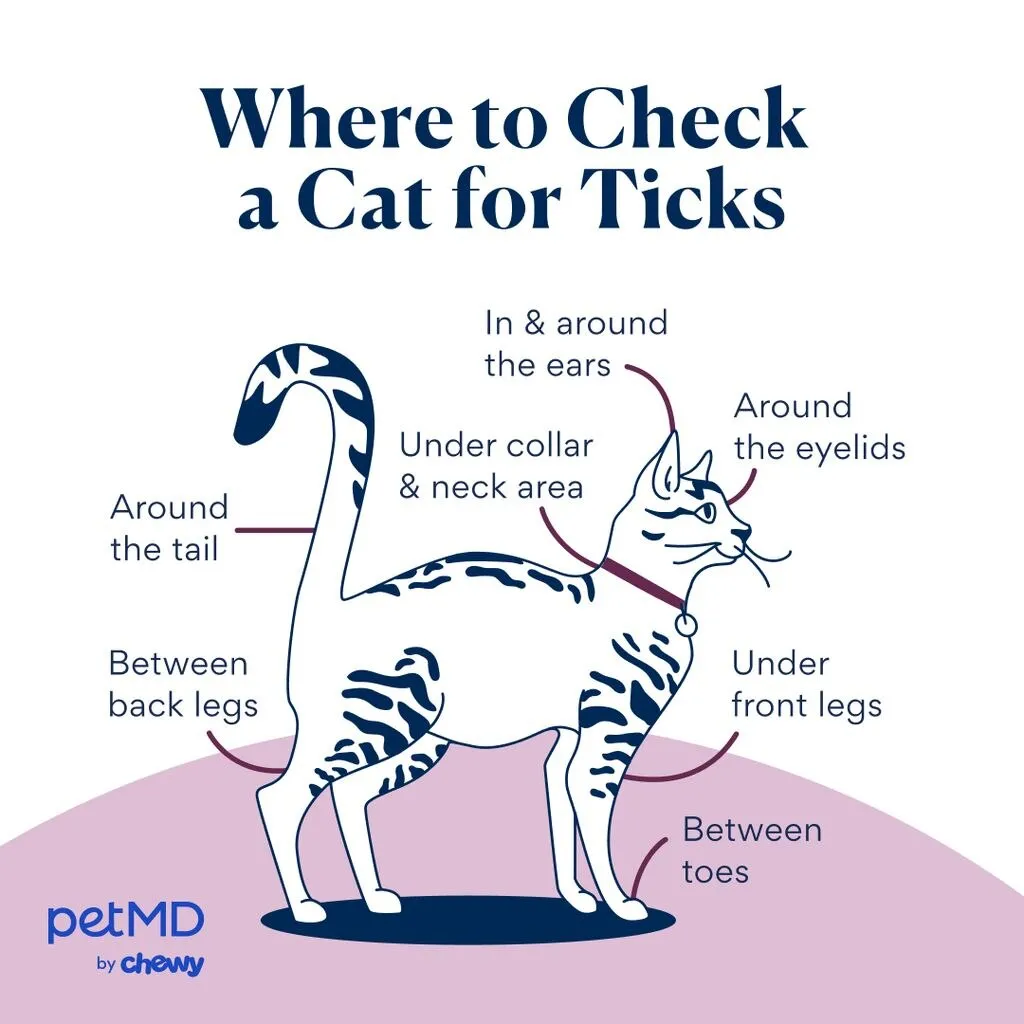Fleas and ticks pose significant threats to cats, causing discomfort, allergies, and serious diseases. Effective flea and tick treatment for cats is a cornerstone of preventive care, ensuring your feline stays healthy year-round. Whether your cat roams outdoors or stays indoors, these parasites can hitch a ride into your home, making monthly protection essential.
Many cat owners underestimate the risks, but veterinarians unanimously recommend consistent use of approved products. In this guide, we’ll explore why prevention matters, how to select the best options, and tips for safe application. For broader insights into maintaining your cat’s overall wellness, check out our article on cat gut health.
Why Flea and Tick Prevention Matters for Cats
Fleas and ticks are ectoparasites that feed on your cat’s blood through bites. While the punctures are tiny, flea saliva often triggers intense itching, leading to flea allergy dermatitis—a common skin condition in cats characterized by hair loss, red inflamed skin, and secondary infections.
Tick bites carry even graver dangers, including bacterial infections, abscesses, tick paralysis from neurotoxins, and in severe cases, death if untreated. Both parasites transmit diseases like bartonellosis (cat scratch disease), tapeworms from fleas, and rarer tick-borne illnesses such as cytauxzoonosis or anaplasmosis.
Cats face lower risks of some tick diseases compared to dogs, but zoonotic threats exist—parasites can pass illnesses to humans. Prevention eliminates these risks upfront, sparing your cat pain and you costly vet bills. According to veterinary experts, early intervention with reliable flea and tick meds prevents infestations from escalating.
How to Choose the Best Flea and Tick Treatment for Cats
Selecting the right flea and tick treatment for cats requires considering your pet’s unique needs. Always consult your veterinarian first—they’ll tailor recommendations based on local risks and your cat’s profile.
Ensure Species-Specific Products
Never use dog flea and tick products on cats. These often contain permethrins, which are highly toxic to felines, causing tremors, seizures, or fatal reactions due to cats’ inability to metabolize them effectively. Always verify the label states “for cats only” and get vet approval.
Topical vs. Oral Application Methods
Topical spot-on treatments are applied to the skin between the shoulder blades. They spread via oils but may irritate sensitive skin, cause temporary hair loss, or be less effective if your cat swims or is bathed frequently. Avoid if you have young children or lick-prone pets, as the site must dry fully.
Oral treatments, like chewable tablets, are absorbed into the bloodstream for faster action against fleas. Ensure your cat consumes the full dose; monitor closely if they’re picky eaters. If vomiting occurs post-dose, contact the manufacturer or vet for redosing guidance. Pairing with food can reduce stomach upset and improve absorption.
Factor in Your Location and Local Parasites
Parasite prevalence varies by region. Use resources like the Companion Animal Parasite Council (CAPC) to check flea, tick, heartworm, and intestinal worm risks in your area. For instance, southern U.S. states see higher flea activity year-round, while ticks thrive in wooded Northeast regions. This informs comprehensive protection, including for gut parasites—learn more about supporting cat gut health.
Account for Outdoor Access
Outdoor cats face elevated exposure in grassy, wooded, or untreated yards. Even indoor cats aren’t immune—fleas sneak in via screens, clothing, shoes, or visiting pets. Apartment dwellers risk neighbor-shared infestations. Vets advocate year-round prevention for all cats.
Consider Lifestyle and Breed Traits
Some cats, like adventurous Bengals or Manx breeds, hunt outdoors more, heightening risks. Intact (unspayed/unneutered) cats roam farther than sterilized ones. A tiny fraction carry the MDR1 gene mutation, making them sensitive to certain drugs—test via Washington State University if concerned.
Match to Life Stage and Weight
Kittens under 8 weeks or lightweight cats need age/weight-appropriate options; most start at 6-8 weeks. Consult packaging and your vet.
Review Medical History
Isoxazolines (a common class) may lower seizure thresholds in cats with neurological issues. Avoid preventatives if your cat has drug allergies, is pregnant/nursing, sick, or underweight. Routine checks amplify safety.
Regularly inspect your cat: part fur around ears, neck, armpits, groin, and tail base for parasites, especially in warmer months.
 where to check a cat for ticks
where to check a cat for ticks
Over-the-Counter vs. Prescription Flea and Tick Options
OTC products are readily available online or in stores without a vet script but vary in efficacy. Prescription meds, obtained via vet consult, are generally safer, more potent, and backed by clinical data—most pros prefer them for reliable parasite kill and repellency.
Common options include:
| Product Type | Examples | Key Benefits | Considerations |
|---|---|---|---|
| Oral (Rx/OTC) | Comfortis, Capstar | Fast flea kill (24 hrs), systemic action | Ensure full ingestion; monitor for GI upset |
| Topical (Rx/OTC) | Frontline Plus, Revolution | Long-lasting (monthly), waterproof | Dry time needed; skin irritation possible |
| Combo (Rx) | Bravecto, Credelio | Covers fleas, ticks, heartworm, worms | Vet-prescribed for broad protection |
Implement Year-Round Flea and Tick Prevention
Start prevention immediately, regardless of season or location. Fleas thrive indoors at 70°F+, and ticks persist in mild winters. Monthly dosing maintains protection gaps-free.
Flea and Tick Prevention FAQs for Cats
What’s the most effective flea treatment for cats?
Oral options excel, killing fleas quickest via bloodstream absorption versus slower skin-spread topicals.
How do vets treat heavy flea infestations?
They often begin with a Dawn dish soap bath to drown fleas, followed by oral meds like Capstar (kills adults in 24 hours) or Comfortis. Capstar pairs safely with monthlies.
Do indoor cats need flea treatment?
Yes—fleas enter via humans, cracks, or other pets. Year-round control prevents surprises.
In summary, proactive flea and tick treatment for cats safeguards health and happiness. Partner with your vet for personalized plans, perform checks, and maintain routines. Your cat deserves a pest-free life—explore more pet care tips on our site today!
